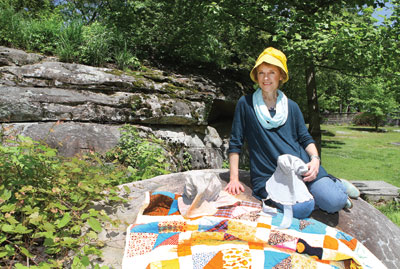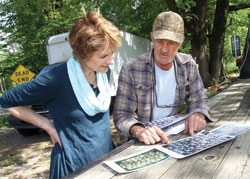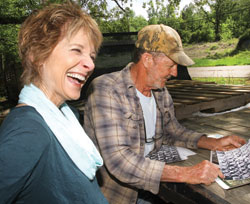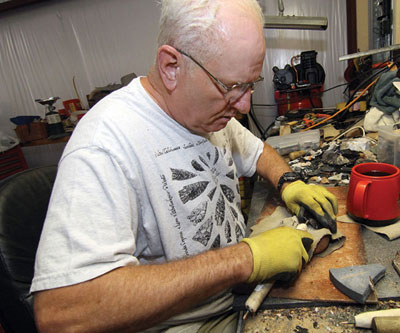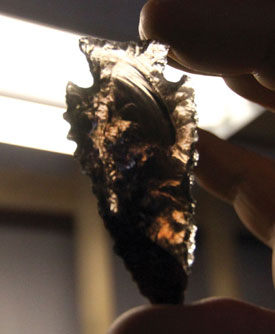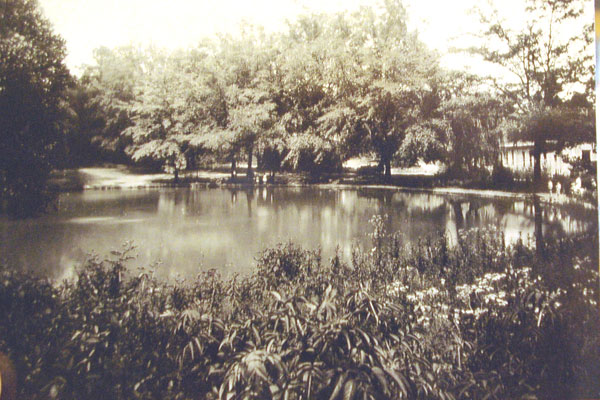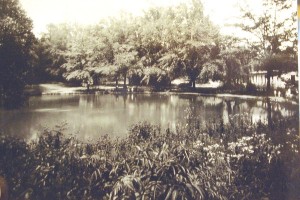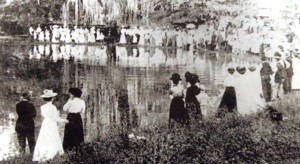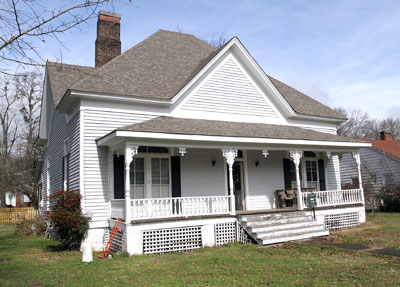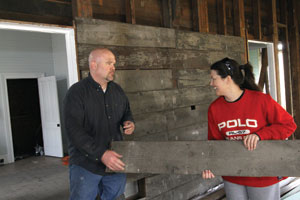Theater group is uniquely Springville
Story by Jane Newton Henry
Photos by Brandie Felice, Judy Shults
and Janet McBroom
It’s a true story that reads like the opening scene of a classic Broadway musical: June Morgan Mack returns home to Springville in 1976 with her college diploma, only to find that her summer job has fallen through. She talks with her neighbor, Archie Jones, about the problem, and he says, “Why don’t you do a show?”
So that’s what she did. She wrote a children’s musical titled, “Circus Magic,” and found about 25 people to produce and appear in the play. They built sets, made costumes, rehearsed and did one performance at Springville High School, now Springville Middle School. “Everybody got a charge out of it, so we decided to do it again the next year,” she said.
That production marked the beginning of Springville Children’s Theater. For five summers, Mack wrote and directed children’s musicals. Thirty seven years later, the theater group in the St. Clair County town of about 4,000 people, is still going strong.
She credits the “incredibly talented” people of Springville for keeping the effort going. In addition, the group’s unique operating philosophy has played a major role in its success.
Extraordinary talent
“When we started the theater group, there were so many talented people right here in Springville — all these incredible people who were singing in church choirs,” Mack said. “Since then, I’ve been in many other states and have done many other things, but I would still say that the talent in Springville is extraordinary.”
Mack recalled the performances in “Circus Magic.” Twelve-year old Shawn Cushen worked as the stage manager and played the male lead in the play. Penny Burgess played opposite him. “They were terrific in the play. And they were brilliant kids. They were making all A’s in school, but to memorize all of those pages of the script and then to stand up and spit out their lines with gusto – that was something no one knew they could do.”
A unique philosophy
Our guiding principle is to cast every person who auditions, she said. “We believe that if it’s fun and interesting for people, and they learn a lot and are proud of themselves, the show takes care of itself.”
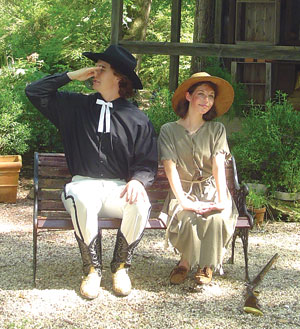 By 1981, the grown-ups wanted to do larger-scale shows requiring casts of all ages, Mack said. That year, the group chose “Oklahoma!,” and it became the first in a long line of Broadway musicals that the newly named Springville Community Theater would produce.
By 1981, the grown-ups wanted to do larger-scale shows requiring casts of all ages, Mack said. That year, the group chose “Oklahoma!,” and it became the first in a long line of Broadway musicals that the newly named Springville Community Theater would produce.
“’Oklahoma!’ was expandable,” she said. “We could put all the kids in it we could find, which is a big deal for us.”
The group has a particular interest in bringing first-timers to the stage – especially children. “We believe that a community theater not only fosters a positive community spirit, but builds confidence and forges lifetime friendships.”
The theater also plays an educational role. Mack explained that during the organization’s early years, there wasn’t any other live theater in the area, and children were growing up without it.
“They didn’t know the classical musical-theater literature, and that’s one reason I’ve been so dedicated to doing the classics,” she said. “We will do Rogers and Hammerstein forever.”
After the production of “Oklahoma!,” the theater has produced classic Broadway musicals every few years. They performed “Oklahoma!” a second time in 2010, which was performed outdoors at nearby Homestead Hollow, and just this month, they performed South Pacific again — 30 years after their first production of that show.
June Mack
Mack, who founded the Springville theater group and has directed most of the shows, says that preparing for a production is difficult. “It’s not just for fun. It’s disciplined,” she said. “I’m regimented about people knowing their lines before I even see them.
“It’s hard work, but that raises the bar and makes people take it more seriously. People will always step up to the challenge. I expect great things; they surprise themselves — that’s how it works. So I keep upping the challenge; that’s my job. As long as I can keep doing that, they will keep surpassing their expectations.”
She credits the people of Springville with helping her learn her craft. “They taught me to direct,” Mack said. “I am so grateful for the patience and devotion of these people for all of these years.
“We’ve hit obstacles and said, ‘That’s it. The show’s gonna be shut down. It’s never gonna work.’ But you give these people 30 minutes to regroup and think, and we’ll move forward again.”
Since Mack’s first summer with Springville Children’s Theater, she has worked on more than 50 theater productions and 70 films. In addition to her bachelor’s degree in composition for musical theater from Hollins College, she received master’s degrees in film and education from Florida State and Harvard University. Her films have garnered 22 international awards and have been seen on national television and at screenings here and in other countries. She is a professor of film at the University of Alabama in Birmingham. Expect to hear about auditions for another summer musical in Springville in a couple more years. If you would like to get involved in Springville Community Theater, contact Mack at (205) 467-3105 or jmack@uab.edu.
Editor’s Note: If you have been involved in a production of Springville Children’s Theater or Springville Community Theater and have film or video footage from a show or shows, contact June Mack at (205) 467-3105 or jmack@uab.edu. She is collecting footage to have it digitally archived.












